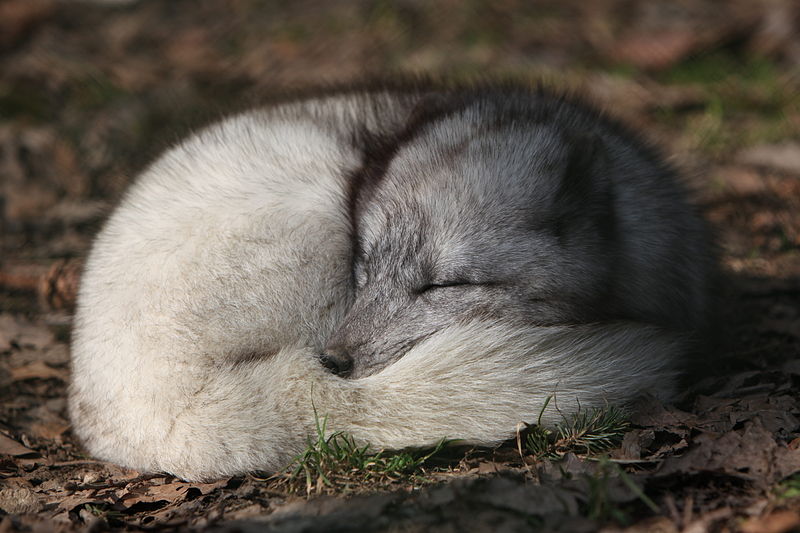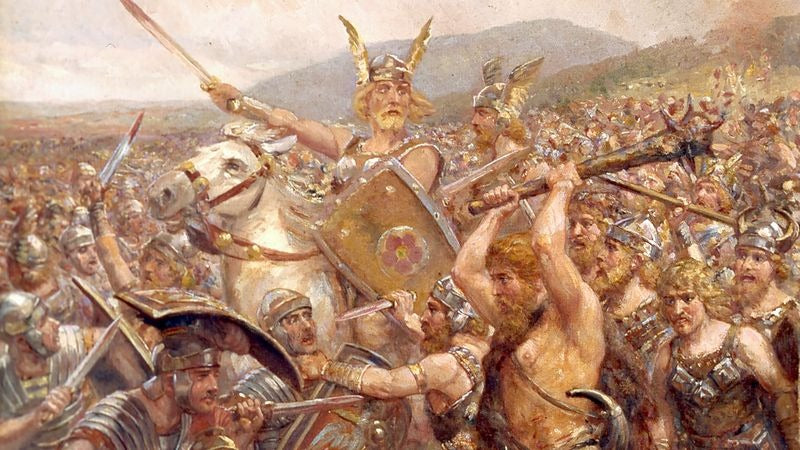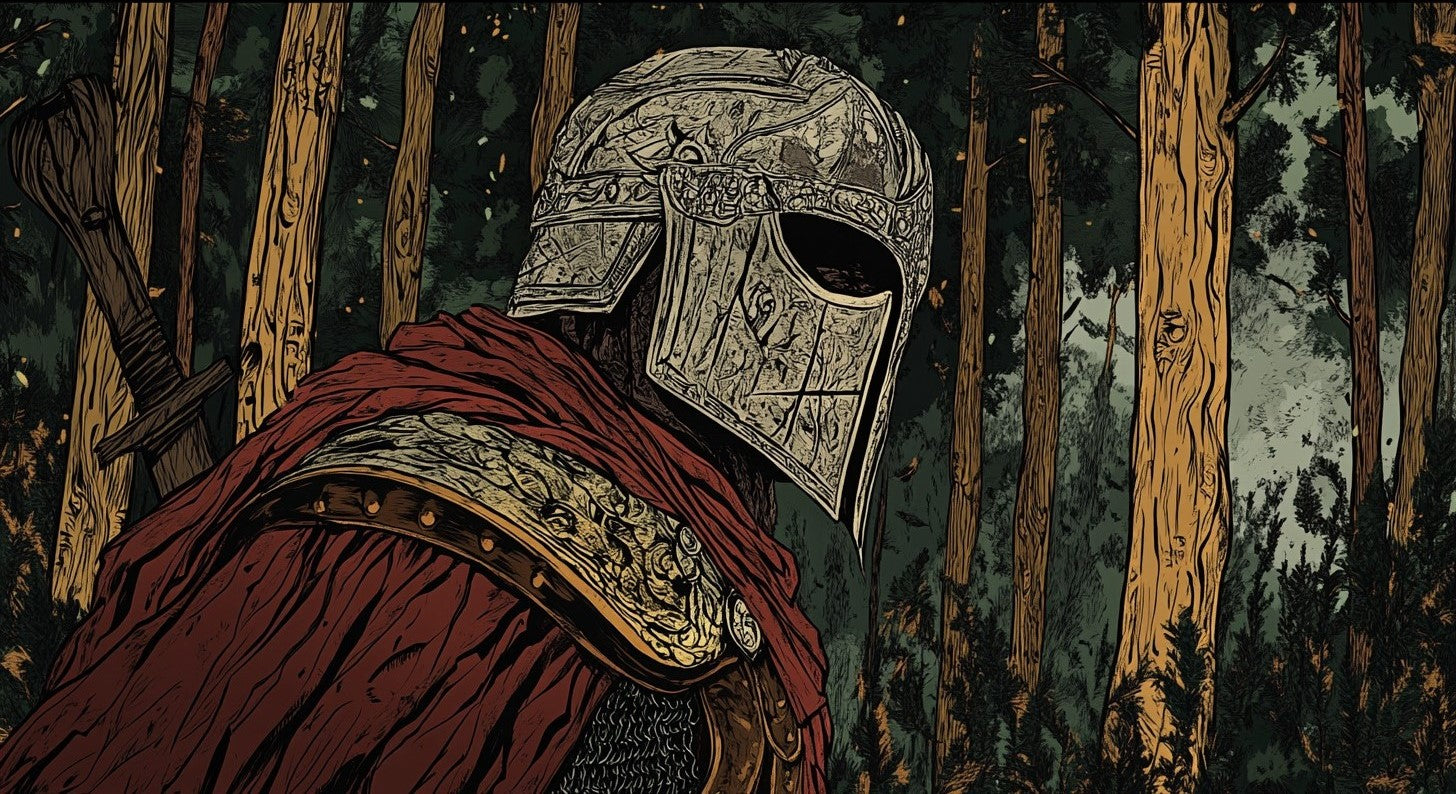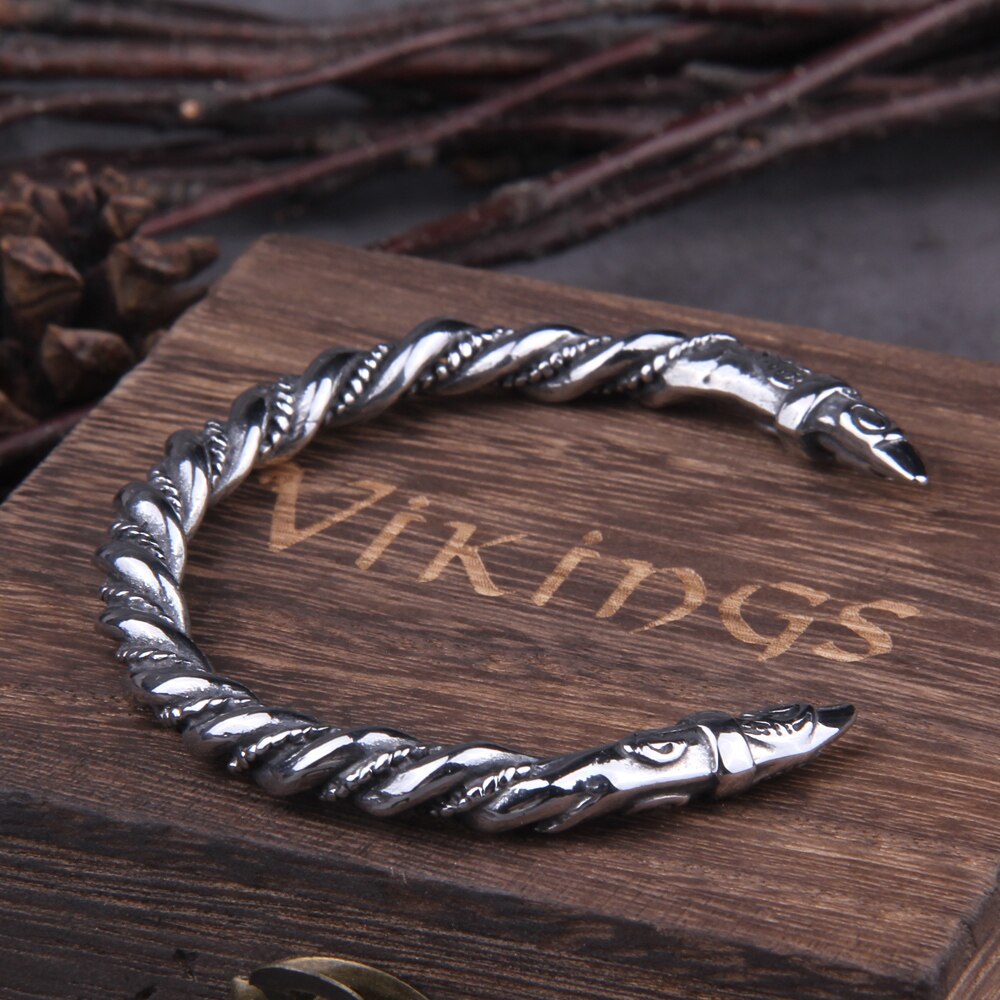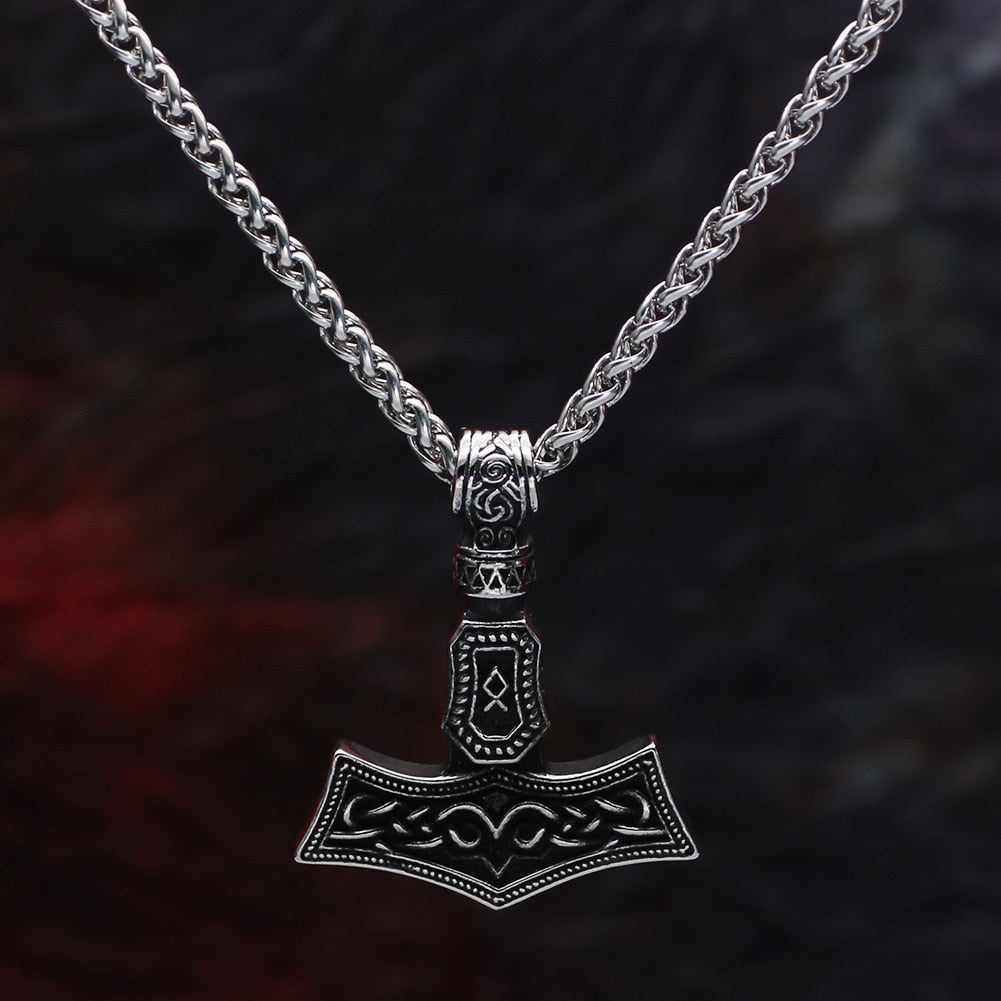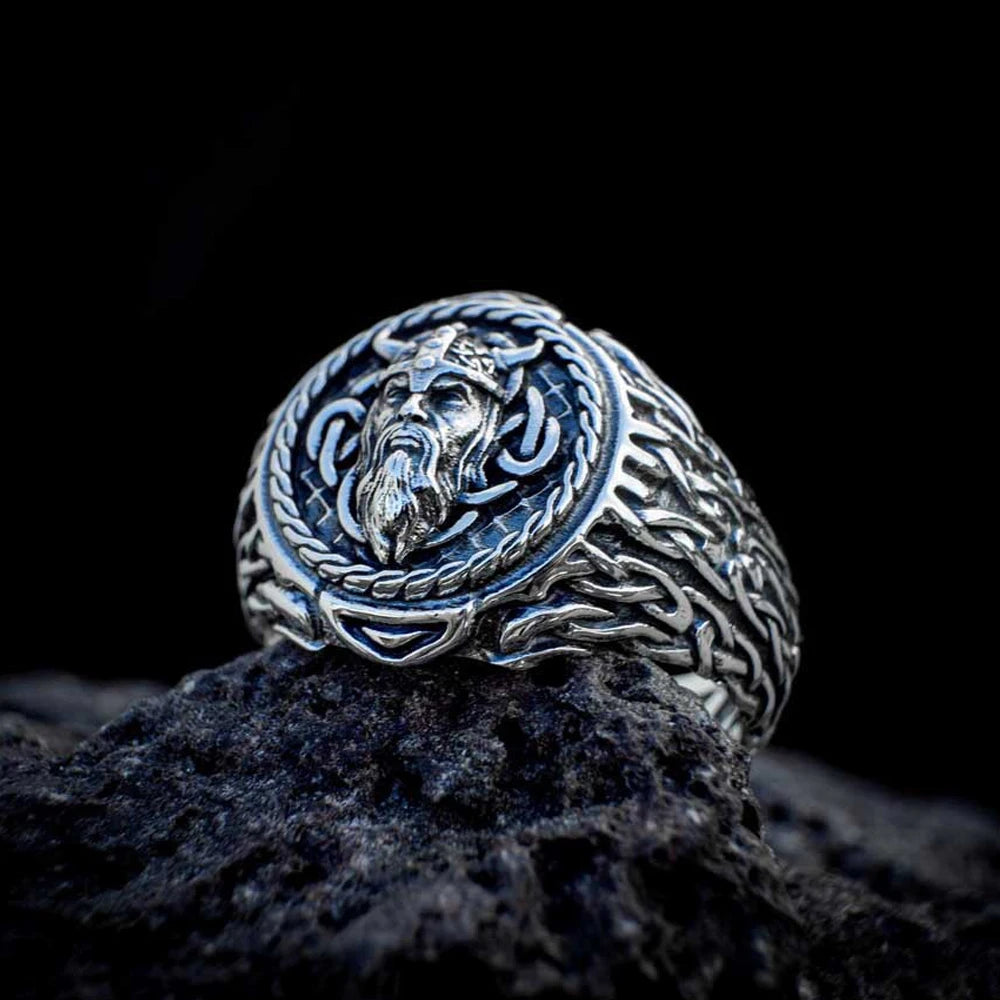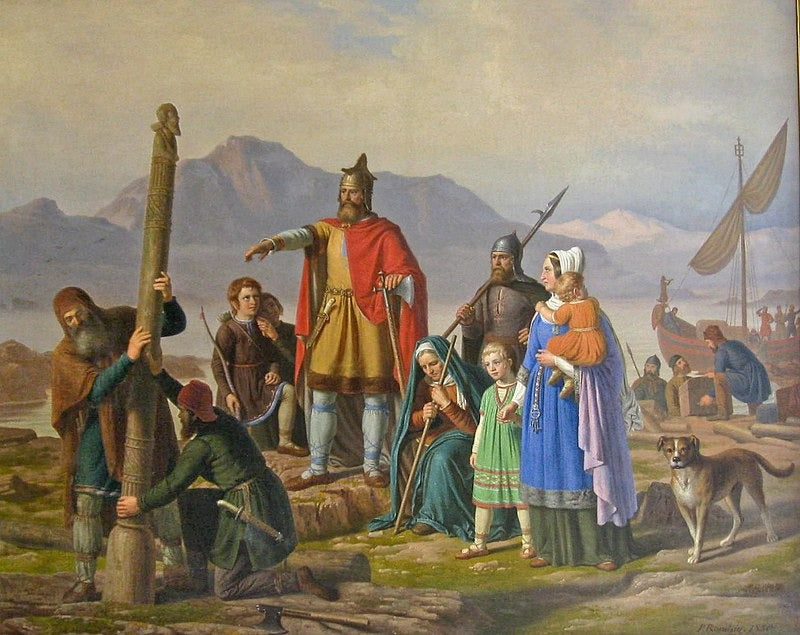
The Norse Discovery and Settlement of Iceland: From Exploration to Society Formation
The Norse discovery and settlement of Iceland represents one of the most significant and well-documented episodes of medieval colonization in European history. This massive undertaking, spanning from the late 9th to early 10th centuries, transformed an essentially uninhabited island into a complex Norse society that would preserve and develop unique aspects of Germanic culture for centuries to come. The settlement period, known as landnám (land-taking), demonstrates the remarkable adaptability of Norse society and their capability to establish sustainable communities in challenging environments.
Pre-Norse Iceland: The Papar and Early Visitors
Archaeological and historical evidence confirms that Iceland wasn't entirely uninhabited when the Norse arrived. Irish monks, known as Papar, had established themselves on the island possibly as early as the 8th century CE. Dicuil, an Irish monk writing in 825 CE, described in his work "De mensura orbis terrae" the presence of Irish hermits in lands that match Iceland's description. Archaeological excavations at sites like Kirkjubæjarklaustur have uncovered evidence of Christian hermitages, including crosses, bells, and distinctive building styles consistent with Irish monastic settlements.
The Papar left their mark in Icelandic toponymy, with place names such as Papey and Papýli preserving their memory. Recent archaeological discoveries, including the 2016 findings at Stöð in Stöðvarfjörður, have provided new insights into pre-Norse habitation, revealing structures and artifacts that suggest more extensive Irish presence than previously thought.
Early Norse Exploration and Discovery

Flóki Vilgerðarson, 'Hrafna-Floki' (Illustration: Paganheim).
The process of Norse discovery unfolded through several key voyages, each contributing to the growing knowledge of this North Atlantic island:
Naddodd (c. 860 CE): A Faroese Viking who accidentally discovered Iceland while sailing to the Faroe Islands. Landing on the eastern coast, he climbed a mountain to look for signs of habitation. Finding none, he named the land Snæland (Snowland) due to heavy snowfall experienced during his visit. Detailed accounts in Landnámabók describe his journey and initial impressions of the landscape.
Garðar Svavarsson (c. 864 CE): A Swedish Viking who became the first to circumnavigate Iceland, proving it was an island. His winter settlement in Húsavík (meaning "House Bay") marked the first known Norse dwelling in Iceland. The island briefly bore the name Garðarshólmi in his honor. Archaeological excavations in Húsavík have revealed artifacts dating to this period, confirming early Norse presence.
Flóki Vilgerðarson (c. 868 CE): Known as Hrafna-Flóki (Raven-Flóki) due to his use of ravens for navigation, he conducted the first deliberate voyage to Iceland. His expedition provided crucial information about the island's resources and challenges. After spending a harsh winter in Vatnsfjörður, during which his livestock perished due to inadequate preparation, he gave the island its current name, Ísland (Iceland), though his negative reports initially discouraged settlement.

Norse Icelandic Ouroboros Vegvísir Ring
Navigation and Technology
The successful discovery of Iceland demonstrated the sophisticated navigation techniques of Norse sailors. They relied on a combination of:
- Solar navigation using solar stones or 'sunstones' (though mentioned in sagas, there's a lack of archaeological evidence these were used during the Viking Age)
- Bird flight patterns
- Ocean current knowledge
- Cloud formations and weather patterns
Recent archaeological findings, including the discovery of a Viking solar compass in Greenland, have enhanced our understanding of Norse navigation capabilities during this period.
Political Context: The Forces Driving Migration

19th century depiction of the Norsemen arriving in Iceland by Oscar Wergeland
Norwegian Political Climate
The primary catalyst for large-scale migration to Iceland was the political transformation of Norway under Harald Fairhair (Old Norse: Haraldr hárfagri, c. 850-932 CE). His campaign to unify Norway, culminating in the Battle of Hafrsfjord (c. 872-880 CE), fundamentally altered the power structure of Norwegian society. Contemporary sources, including skaldic poetry and later saga accounts, describe how Harald's victory led to:
- Consolidation of royal power
- Implementation of new tax systems
- Restriction of traditional aristocratic rights
- Confiscation of óðal (ancestral) lands
These changes prompted many Norwegian nobles and their followers to seek new lands where they could maintain their independence and traditional lifestyle.
British Isles Connection
A significant portion of settlers came from Norse colonies in the British Isles, particularly:
- The Northern and Western Isles of Scotland
- Ireland and its Norse settlements
- The Isle of Man
- Norse-controlled areas of England
Recent genetic studies have revealed that approximately 60% of the original female settlers came from the British Isles, suggesting a complex pattern of migration that included both Norse and Celtic peoples.
The Settlement Process (874-930 CE)
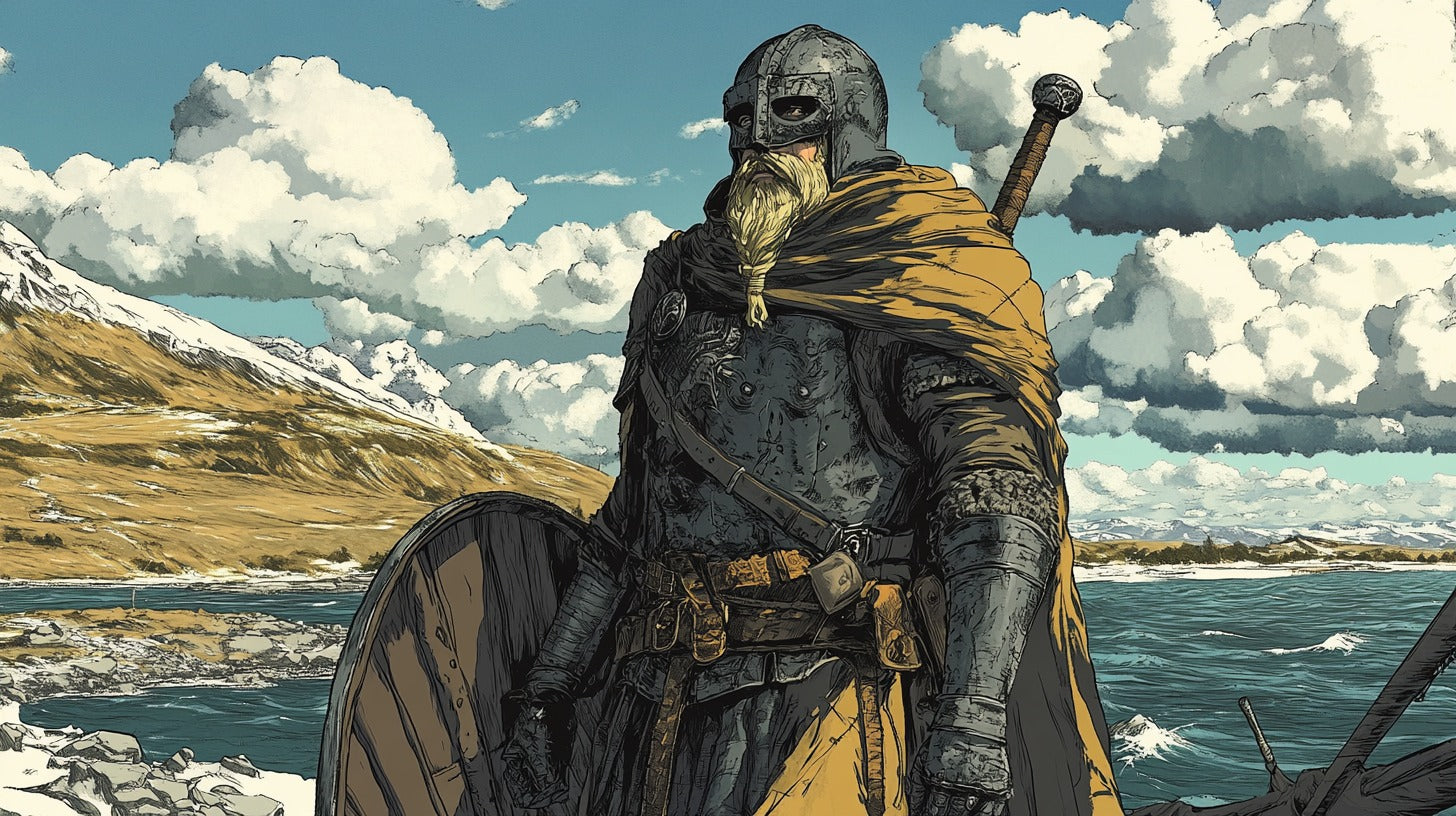
Ingólfr Arnarson, the Norse settler renowned for founding the first settlements in Iceland (Illustration: Paganheim)
Initial Settlement and Pioneers
The traditional date for the beginning of permanent settlement is 874 CE, marked by the arrival of Ingólfr Arnarson and his foster-brother Hjörleifr Hróðmarsson. According to the Landnámabók, Ingólfr's settlement process began with careful exploration in 871 CE, followed by permanent settlement three years later. Following Norse religious customs, he cast his high-seat pillars (öndvegissúlur) into the sea, vowing to settle where they washed ashore. These pillars, carved with images of Norse gods, were eventually found in present-day Reykjavík, where Ingólfr established his farmstead.
Archaeological excavations in downtown Reykjavík have substantiated much of the traditional narrative. Researchers have uncovered a longhouse dating to approximately 870-880 CE, along with artifacts indicating high-status occupation. The discoveries include evidence of early agricultural activity and trade goods from Norway and the British Isles, suggesting immediate establishment of trade networks.

Leif's Talisman - Valknut Vegvísir Ring
The Great Migration
The period between 874 and 930 CE witnessed a remarkable population movement, with approximately 20,000-25,000 people migrating to Iceland and establishing an estimated 4,000 farms. The settlement pattern evolved through distinct phases, beginning with the early period from 874-900 CE, when powerful chieftains claimed the prime coastal areas and established major political centers. This initial phase laid the groundwork for future expansion and development.
The middle phase of settlement, from 900-920 CE, saw expansion into inland areas and the development of more complex farming systems. Secondary settlements emerged, often connected to the original coastal farms through family ties or political allegiances. During this period, the agricultural foundation of Icelandic society became firmly established, with settlers adapting Norwegian farming practices to Iceland's unique environmental conditions.
The final phase of settlement, from 920-930 CE, witnessed the occupation of remaining viable land and the establishment of sophisticated social and economic systems. By this time, most arable land had been claimed, leading to the development of complex systems of tenant farming and land management.
Regional Development and Settlement Patterns

A replica of an old fishing post close to side Bolungarvík, known as an Ósvör (Photo: Herbert Ortner CC BY 2.5)
Geographical Distribution
Settlement patterns reflected careful adaptation to Iceland's varied landscape and climate. The coastal regions became primary settlement areas, offering advantages for both farming and fishing, while providing easier access to building materials and trading opportunities. These areas developed into major centers of population and power, with chieftains establishing substantial farms that controlled access to resources and trade.
The inland valleys, though settled later, became crucial to Iceland's agricultural system. Settlers in these regions developed specialized farming techniques adapted to shorter growing seasons and more challenging conditions. They established complex systems of livestock management and created networks of farms that shared resources and labor during crucial times in the agricultural calendar.
The highland areas, while not suitable for permanent settlement, became integral to the Icelandic farming system through seasonal usage. Farmers developed sophisticated transhumance practices, moving livestock between lowland and highland pastures according to the seasons. This system maximized the use of available grazing land while protecting valuable lowland resources.
Resource Management
The settlers quickly recognized the need for careful management of Iceland's limited resources. Woodland management became particularly crucial, as the initial rapid clearing of forests for agriculture and building materials threatened this valuable resource. The early Icelanders developed systems for controlled clearing and implemented measures to preserve remaining woodlands. They also adapted to using alternative materials, such as peat and driftwood, for fuel and construction.
The management of grazing lands proved equally important to the settlement's success. Settlers developed sophisticated systems for sharing grazing rights and established patterns of seasonal migration that made optimal use of available pastureland. These systems were codified through local agreements and eventually became part of Iceland's legal framework, demonstrating the settlers' ability to create sustainable resource management practices.
Social Structure and Governance

Class System
The settlement period established a distinct social hierarchy that would characterize Icelandic society for centuries. At the top of this hierarchy stood the goðar, chieftains who combined religious, legal, and political authority. These leaders controlled assembly membership and maintained complex networks of allegiance with free farmers. Unlike their counterparts in Norway, Icelandic goðar derived their power not primarily from land ownership but from their ability to maintain relationships with free farmers who chose to follow them.
Below the goðar stood the bændr, free farmers who owned their land and enjoyed full legal rights. These farmers formed the backbone of Icelandic society, participating in local and national assemblies and maintaining a degree of independence unusual for medieval Europe. Their ability to choose which goði to follow created a unique dynamic in Icelandic society, where political power required constant negotiation and maintenance of relationships.

Icelandic Vegvísir Talisman - Rustic Wide Leather Viking Bracelet
The leigulendingar, tenant farmers, occupied the next social tier. Though legally free, they farmed land owned by others and often depended on their landlords for political representation. Despite these limitations, many tenant farmers maintained considerable autonomy and could accumulate wealth through livestock ownership and trade.
The Development of Law and Government
The establishment of Iceland's legal system represents one of the most remarkable achievements of the settlement period. The settlers created a sophisticated system of laws and governance without a central executive authority, developing instead a complex network of things (assemblies) that culminated in the establishment of the Alþing at Þingvellir in 930 CE.
Cultural Evolution and Identity Formation

Skógafoss waterfall, Iceland (Photo: Big-Ashb CC BY 2.0)
Religious and Cultural Continuity
While maintaining strong connections to their Norse heritage, the settlers developed distinct cultural practices adapted to their new environment. The isolation of Iceland allowed for the preservation of older Norse traditions that were already changing in Scandinavia, while simultaneously fostering innovations unique to Iceland. This period saw the emergence of a distinctive Icelandic identity, shaped by the challenges and opportunities of the new land.
The settlers brought with them the Norse pantheon and religious practices, but these underwent subtle changes in the new setting. Sacred spaces were established across the landscape, with many place names preserving evidence of religious significance. The practice of religion became intertwined with the political authority of the goðar, creating a distinctive Icelandic approach to spiritual matters.
The Seeds of Literary Culture
The settlement period laid the groundwork for Iceland's extraordinary medieval literary culture. The necessity of remembering and transmitting information about land claims, genealogies, and legal decisions fostered a strong oral tradition that would eventually develop into the written sagas. The complex relationships between settlers and their diverse origins created a rich tapestry of stories that would later be preserved in works like Landnámabók and the Icelandic family sagas.
Environmental Impact and Adaptation
The Arctic Fox, the only land mammal that's inhabited Iceland before the arrival of humans (Photo: Rama, Wikimedia Commons CC BY-SA 2.0)
The arrival of Norse settlers triggered significant environmental changes in Iceland. The introduction of grazing animals, particularly sheep and cattle, along with the clearance of birch woodlands for farming, initiated a process of environmental transformation. Paleoenvironmental evidence shows accelerated soil erosion and changes in vegetation patterns during this period. However, the settlers also demonstrated remarkable adaptability, developing farming practices suited to Iceland's unique conditions and creating systems for managing marginal environments.
The Norse settlement of Iceland represents a unique chapter in medieval history, demonstrating the capacity of human societies to adapt to challenging environments while creating sophisticated social and political institutions. The settlement period established patterns of social organization, resource use, and cultural development that would shape Icelandic society for centuries to come.
Frequently Asked Questions (FAQs)
- How many people settled in Iceland during the initial settlement period?
Recent genetic and historical research suggests approximately 20,000-25,000 settlers arrived during the primary settlement period (874-930 CE), establishing roughly 4,000 farms across the habitable regions of Iceland.
- What role did women play in Iceland's settlement?
Women played crucial roles as settlers, property owners, and maintainers of social networks. Genetic studies indicate that approximately 60% of female settlers came from the British Isles, contributing to Iceland's distinctive genetic heritage.
- How did the settlers survive their first winters?
Early settlers combined farming practices brought from Norway with hunting, fishing, and gathering. They utilized natural resources like hot springs for warmth and cooking, while developing preservation techniques for food storage.
- What evidence exists of pre-Norse settlement?
Archaeological evidence and historical documents confirm the presence of Irish monks (Papar) before Norse settlement. Findings include religious artifacts, building remains, and place names preserving their memory.
- How did the settlement affect Iceland's ecosystem?
The settlement period saw significant environmental changes, including deforestation and soil erosion. However, settlers developed systems for resource management that allowed for sustainable long-term occupation.
References
Byock, Jesse (2001). Viking Age Iceland. Penguin Books.
Karlsson, Gunnar (2000). Iceland's 1100 Years: History of a Marginal Society.
Smith, Kevin P. (1995). Landnám: The Settlement of Iceland in Archaeological and Historical Perspective.
Vésteinsson, Orri (2000). The Christianization of Iceland: Priests, Power, and Social Change 1000-1300.
Price, T. Douglas & Gestsdóttir, Hildur (2018). The First Settlers of Iceland: An Isotopic Approach to Colonisation.
Sigurðsson, Jón Viðar (2017). Viking Friendship: The Social Bond in Iceland and Norway, c. 900-1300.
Zori, Davide Marco (2016). The Norse Establishment in the Outer Hebrides and Iceland.
Barrett, James H. (2008). What Caused the Viking Age?
"Skógafoss waterfall" by big-ashb is licensed under CC BY 2.0.
